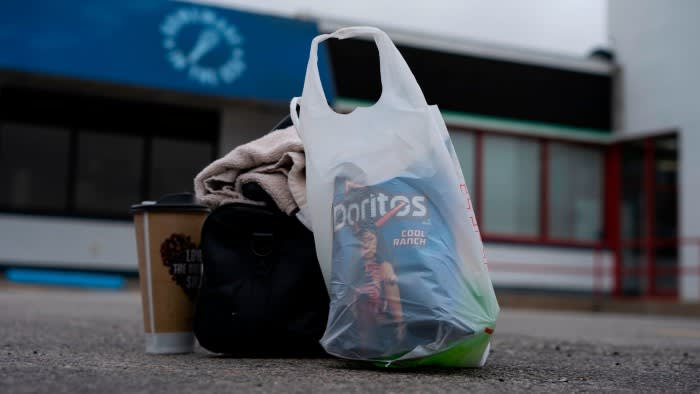Stay informed with free updates
Simply sign up to the Retail & Consumer industry myFT Digest — delivered directly to your inbox.
As we’ve been getting several questions on salty snacks, we did a deep dive into the category looking at tracked channel data for each subcategory.
Citigroup, we love that energy.
Salty snacks have had a great decade, driven by the remorseless, crushing logic of capitalism and the relative demonisation of sugar, write Citi analysts Filippo Falorni et al in a note published today:
We believe the strong historical growth in salty snacks has been driven by some secular trends, such as increased consumer preference for snacking occasions, particularly among younger consumers, smaller average family size, reducing occasions for traditional sit-down meals, and increasingly busy schedules for many consumers…
Typically, larger families are more likely to have traditional sit-down meals, while one and two person households are more likely to consume on-the-go items, such as snacks. In addition, health and wellness trends have broadly been a headwind across food and beverages, but salty snacks have faced less incremental consumer pressure than sugary foods and beverages (such as [carbonated soft drinks]) given heightened focus on reducing sugar consumption, as compared to salt.
The material impact was a period of strong, volume-driven growth, followed by one of very strong, inflation-driven growth — until this year to date:


Is the salty spree over? The apparent problem, would you believe it, is also inflation:
In terms of what has driven the slowdown in salty snacks, we believe a significant driver has been the outsized price increases in the category relative to other food categories. While many consumer products have seen meaningful price increases post COVID, when comparing salty snacks to other packaged food categories, we note that price increases in salty snacks are higher than most other categories. Indeed, when looking at the change in average price from (28 weeks ended 2/29/20) to (28 weeks ended 7/13/24), we note that salty snack prices are ~40% higher, above prepared foods (at +36%), cookies & crackers (at +35%), and cereal & granola (at +34%), but below condiments (at +42%).

A coronary corollary to this has been rising price elasticity in the face of price hikes — a dynamic that’s particularly prevalent at lower income levels, Citi says:

Prices go up, volumes go down, which means prices will now probably have to come down again, bada bing bada boom:
Given the salty snacks slowdown, we expect companies to increase promotional activity to stimulate volumes.
Ah, the circle of price. Was the salty snack surge ever truly justified? Citi notes a “high level of food inflation driven by a rise in commodity costs”, which doesn’t really say much at all.
We’d point to this earnings-call conversation between Jefferies analyst Kaumil Gajrawala and PepsiCo’s boss Ramon L. Laguarta last month (transcript via AlphaSense, our emphasis):
Q: Do you believe that the prices at Frito are too high, given the increases over recent years?
A: Listen, Kaumil, I think I kind of touched on the point earlier, but some parts of the portfolio need value adjustments, some parts of the portfolio don’t. Some parts of the portfolio needs to be – for particular consumers, we need some new entry price points and probably some new promotional kind of mechanics that don’t spec for the consumer to invest so much cash in a purchase of salty. So there’s adjustments that we have to make for certain consumers, some parts of the portfolio.
I don’t think the overall portfolio needs a reset. I think this is going to be about granularity. It’s going to be about good execution of that granularity. And that’s what’s – I think we’re well prepared to do throughout the full value chain. So yes, there is some value to be given back to consumers after three or four years of a lot of inflation. Our cost allows us to do that, whatever we choose to do, and that will be one of the interventions that we’ll be making in the second half, but not the only one. I mean, there’s going to be investments in marketing. There’s going to be investments in better execution that overall will drive the business growth to where we think it will be structured in the coming years.
How generous! Pass the Doritos.
Lectura adicional (día de los ingredientes de la merienda)
— Cocoa costs barely affect what you pay for a Freddo. For that, be glad
— A brief note on the fraught legal status of the Pringle crisp


